|
|
Period:
Yugoslav Wars
Region:
Dalmatia
Croatian camp Lora in Split
Camp Lora was a concentration camp in Split, in which Serbs were tortured and killed during the war in the former Yugoslavia. The camp existed from 1992-1997. The entire state and military leadership of the Republic of Croatia was informed about all the events in the Lora Camp. There were 1,005 registered prisoners who had undergone horrific psycho-physical torture through the camp.
This camp was established at the site of the former Yugoslav People's Army port of war. After the departure of the JNA from the Lora port of war in early 1992, members of the Croatian Army Military Police take over Lora.
According to the testimony of the surviving detainees, Lora was considered one of the most horrible detention camps in the former Yugoslavia during the 1991-1999 wars.
The Republic of Croatia has never acknowledged responsibility for the involvement of its highest state officials and military officers, who knew of the most devastating forms of torture in this camp. From each of the trials conducted in relation to this concentration camp, a farce and were made.
BACKGROUND
SFR Yugoslavia was a federal state made up of 6 republics (FR Slovenia, FR Croatia, SR Bosnia, and Herzegovina, SR Montenegro, SR Serbia, and SR Macedonia). Both Yugoslavia and the JNA were established on the principle of “brotherhood and unity” of all peoples and nationalities who lived in the SFRY.
The social and economic system of the SFRY was socialism.
The 1974 Constitution of Yugoslavia brought about the decentralization of the SFRY, which later enabled the separatist forces in Slovenia and Croatia, and later in Bosnia and Herzegovina to begin the dissolution of Yugoslavia, followed by bloody wars and persecution.
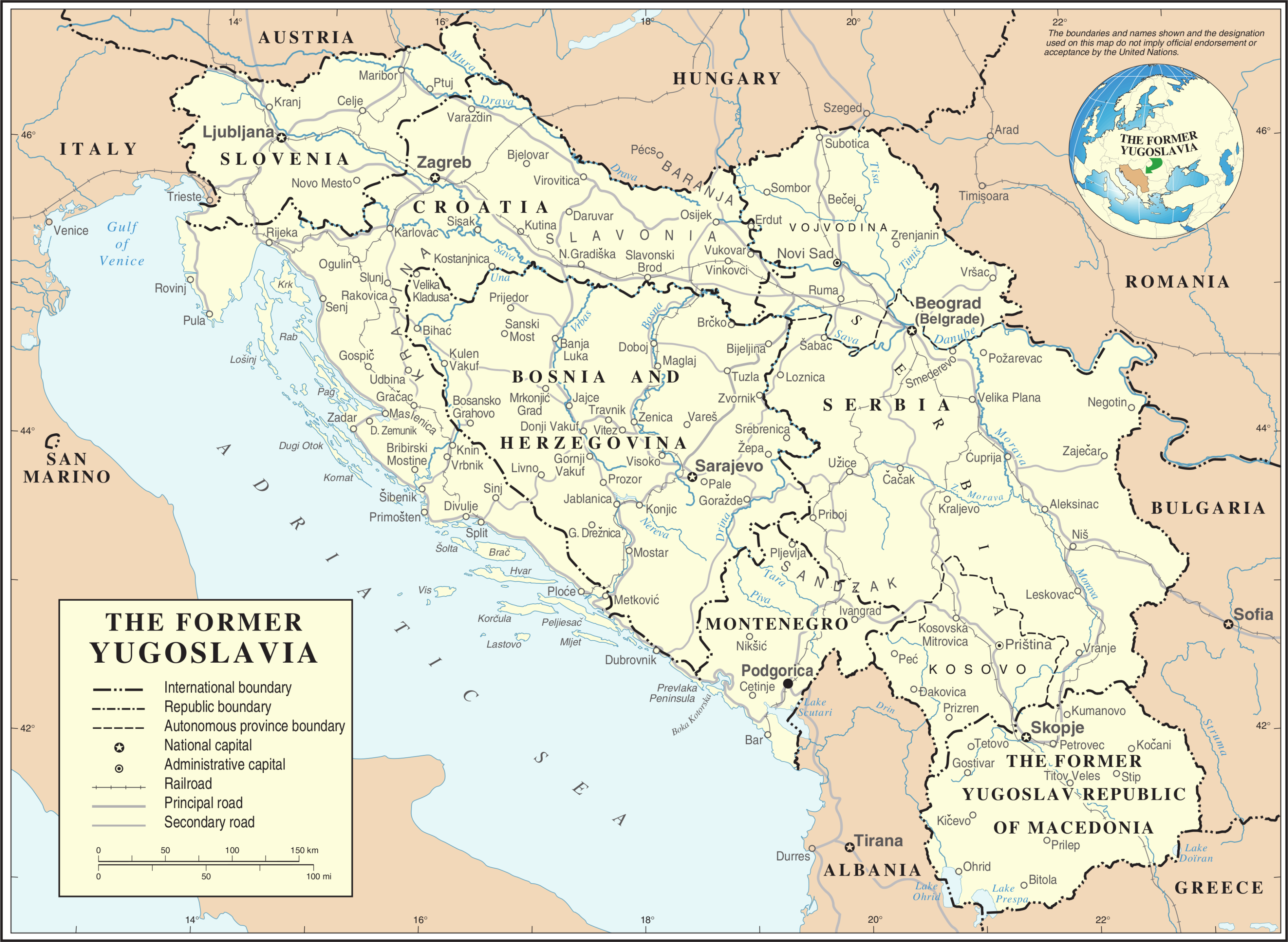
In all the constitutions of Yugoslavia, the Yugoslav People's Army was defined as the only legitimate armed force in the territory of the SFRY, and therefore, the only internationally recognized military entity. At the end of 1989, the SFRY Assembly passed amendments to the Constitution, thus replacing the one-party system with the multiparty system, which meant that besides the Alliance of Communists of Yugoslavia, other parties could now be formed.
At the end of January 1990, the Alliance of Communists of Yugoslavia collapsed, at the 14th SKY Congress in Belgrade, when sharp verbal clashes between Slovenian and Serbian delegates occurred regarding the future of the joint state of the SFRY.

Opposing sides - Kučan and Milosević
The Slovenian delegation left the session, immediately followed by the delegation of the FR Croatia, which brought the issue of the congress into question. After them, the delegations of the FR of Bosnia and Herzegovina and the FR of Macedonia also left the congress.
Thus, after 45 years, the rule of the communists in SFRY ended.
The situation in FR Croatia
On the multi-party elections held in FR Croatia on 22 April 1990, the HDZ party won with its political program clearly stating the desire for independence and separation of FR Croatia from SFRY.

Collaborators against the Serbs: Tudjman and Račan
The victory sparked great euphoria throughout the Federal Republic of Croatia and displays of images of Ustasha criminals (Ante Pavelić, Alojzije Stepinac, Vjekoslav Luburić, and others), while Ustasha greetings and Ustasha songs could be frequently heard. This brought back memories of Serbs in SR Croatia of persecution and genocide in the Independent State of Croatia (The Nazi project between 1941-1945).
As early as spring, the HDZ and Franjo Tudjman took control of the police, the media, the prosecution and the state administration. Serbs working in the police were forced to leave in the spring of 1990 immediately after taking over the power, when the conflict at Maksimir (Zagreb's football stadium) between fans of NK Dinamo (Croatia) and FC Red Star (Serbia), were misused for anti-Serb propaganda.
Thus began a media war against everything that had to do with Serbia and Yugoslavia. In summer, the authorities of the FR Croatia in Zagreb made the decision to form the armed forces themselves. In October and November 1990, a large amount of weapons were illegally imported into the Federal Republic of Croatia for the needs of the reserve police forces, members of the HDZ and the VOC. The action was led by Martin Špegelj and Josip Boljkovac, ministers in the then government of Croatia.
Illegal arming of Croats
The JNA Counterintelligence Service made a film about this endeavor at the JNA military training polygon in Gakov in October 1990 and released it on TV Belgrade on 27 January 1991. On 22 December 1990, a "Christmas Constitution" was solemnly proclaimed in the Parliament, by which the Serbs lost their decades-old constitution rights and Croatia removed the name "socialist" in its name.
Since May 1990, the situation in FR Croatia started worsening day by day and the Serbs were terribly scared for their personal security and their property. Ustasha graffiti, slogans, posters could be seen regularly, and a large number of Serbs received threats by phone that they had to move out of their homes and go to SR Serbia. They even received threatening letters bearing the "HDZ" signature.
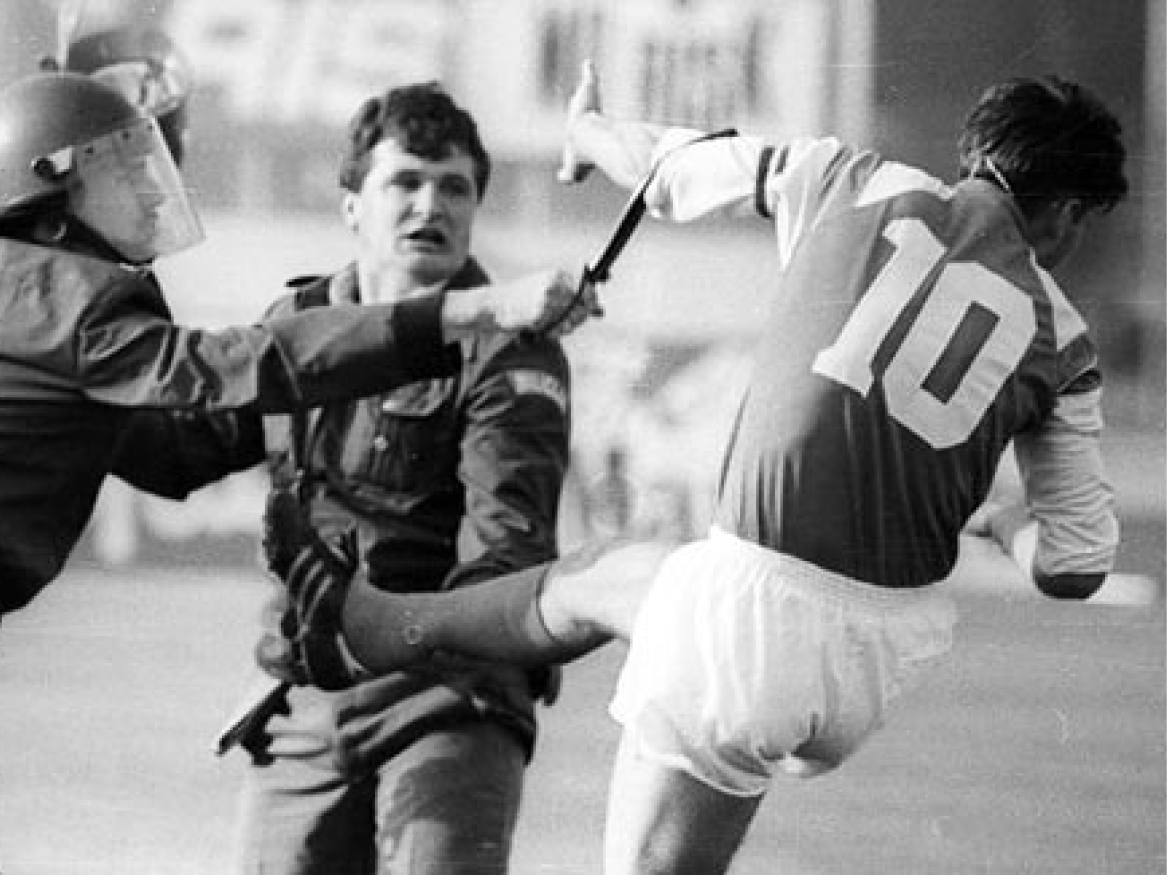
Violence in Zagreb at the Maksimir stadium
Even Croats who were married to Serbs received such threats.
Serbs in Croatia were fired from their jobs, and even their children were mentally and physically abused in schools. In almost all settlements where Croats had an absolute or relative majority, there were certain members of the HDZ party who had a task to keep an eye on the movement of their Serb neighbors (espionage).
Situation in Split
Split is the largest city on the eastern Adriatic coast and the capital of the Dalmatia region. Throughout history, it has changed its name several times, but to this day the Serbian name Split has been maintained. The origin of the name is derived from the broom (beetle) plant, which grows in abundance here.

Welcome to Split city
According to another theory, the name was derived from the Latin word, as an enlargement for a palace or from spalato which means small palace. In the hinterland of Split is Kozjak Hill and Mosor Mountain; and in front of Split there are islands: Brac, Hvar and Solta.
This area was inhabited in ancient Greece, because the Greeks came here to trade olives. Later, the Roman emperor Diocletian (4th century BC) built a huge palace in Split. In the 7th century, the southern Slavs came to these parts, who called the city Split, even though it was a fortress of Byzantine Dalmatia. Since the 11th century, the rule of Split has been taken over by the Venetian Republic, which even bought Split from the Hungarian kings. For a time, Split fell under the territory of Bosnian ruler Tvrtko I Kotromanić. But from the 15th century to the end of the 18th century it returned to the Venetian rule.
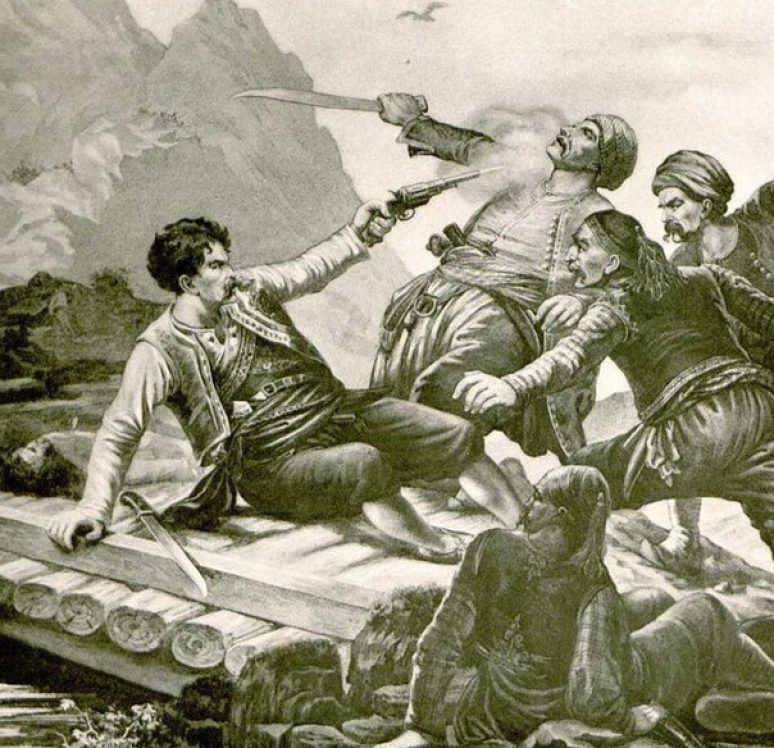
Heroic of Jankovic Stojan
The Ottoman Turks came to these regions at the end of the 16th century, but they did not conquer Split, but rather, Split developed rapidly on the border of the Venetian Republic and the Ottoman Empire. Napoleon occupied Split for a short time, and after his reign in Split, the Austro-Hungarian monarchy ruled for a century, that is, Dalmatia was part of the Viennese empire, which had no direct connection with Croatia, nor did Zagreb control Dalmatia.
After the First World War, with the creation of the Kingdom of the Serbs, Croats and Slovenes, Split became part of the Coastal Region. After the April war of 1941, Split was occupied by the Italian fascist army, until September 1943 when it came under the control of the Yugoslav partisans for a short time, as strong German forces conquered Split and gave it under the control of the Ustasha NDH. It was not until October 26, 1944 that Split was liberated.
After the Second World War, Split fell under the territory of the FR of Croatia, as well as the whole of Dalmatia with Dubrovnik. At that time, Split experienced great industrial development and became a significant tourist center. Thus, immigrants from western Herzegovina, Lika and Dalmatian Zagora came to the city.
The city of Split had a large garrison of the JNA, and Split, which for many years was a strong communist stronghold "overnight," became the stronghold of the HDZ militant party from April 1990.
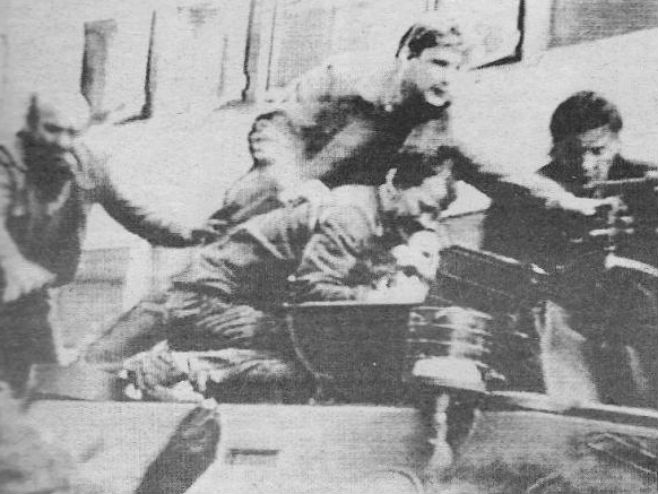
Croatian bullies attacked Federal Army of Yugoslavia
According to the 1991 census, Split had about 190,000 inhabitants. Most Croats were (85%), followed by Serbs (10%) and others (5%). The reason for this national structure lies in the migration of Catholic, Ustasha families from western Herzegovina.
A major demonstration was organized in Split on May 6, 1991, by the HDZ Party, which resulted in the attack on a JNA command building, when JNA soldier Sasko Gesovski was killed, and a JNA military transporter was attacked and protesters tried to drown a soldier JNA Svetlanco Nakov. A serious rifle began between the Serbs in the Knin Krajina and the Croatian paramilitary formations next month, that is, the war in Croatia began.
THE ESTABLISHMENT OF CAMP LORA
At the end of November 1991, an agreement was reached between the authorities in Zagreb and the JNA General Staff on the withdrawal of the Yugoslav Navy from the territory of the Socialist Republic of Croatia. On 4 January 1992, the extraction of equipment, manpower and weapons from the naval complex of the JNA "Lora" in Split began. Immediately thereafter, members of the Croatian military police entered the Lora camp a few days later from the military-detention center.
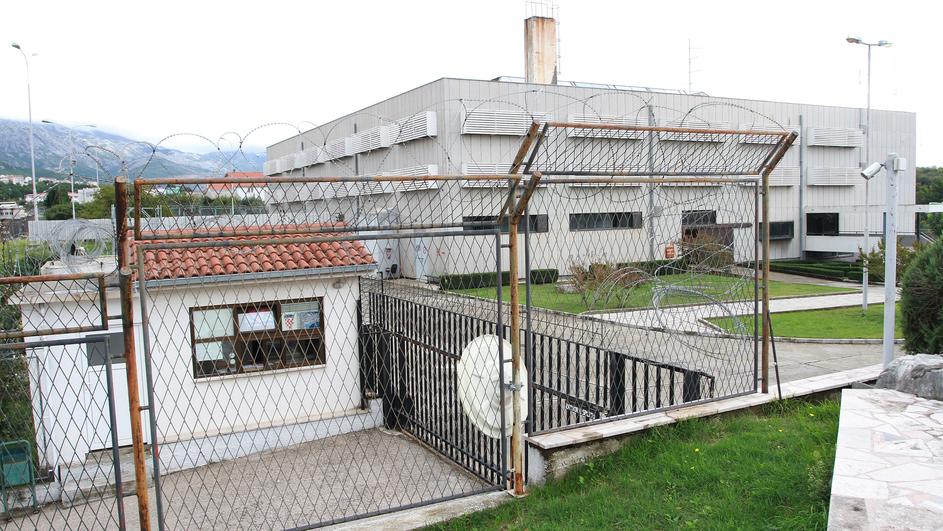
Lora was 10th circles of Hell
The prisoners brought to this concentration camp were of Serbian nationality (men and women), and somewhat less Muslim. Initially, Serbs were brought to this camp from the territory of the Federal Republic of Croatia, and later from April 1992, when war broke out in Bosnia and Herzegovina, and from these areas they brought Serb civilians, wounded, soldiers and prisoners of war to those camps.
The detainees in this camp were from the areas of: Gabela, Duvno, Kupres, Bjelovar, Split, Livno, Dubica, Benkovac, Trebinje, Nevesinje, Niksic, Mostar, Teslic, Klepac, Odzak and Karlovac.
CONDITIONS IN THE CAMP
This camp had very harsh and unbearable living conditions that did not satisfy even the most basic needs of prisoners/inmates. The cells in which the detainees were housed had no inventory or furniture (except one cell that had an iron bed with bars). They slept on the floor i.e. cold concrete. Their diet was very poor and irregular. Sometimes the prisoners did not get a meal for several days. Physical abuse was daily, without mercy or notice.
Even at night, the guards broke into cells and beat the inmates. The food received by the inmates was hot or salty, and at the same time they had to eat it for a short time. Most meals consisted of a slice of bread and pate (or jam). There was no regular medical treatment in this camp. And the inmates were constantly beaten all over their bodies, so much so that they were deformed.
It was often the case that guards forced prisoners to beat each other. If you notice that they are saving each other, they would both be beaten until they bled.
CONCEALING THE CAMP
Croatian military and civilian authorities have skillfully hidden all the camps where Serbs were held in 1991-1997, including this Lora camp, from the ICC and other international organizations that came to Croatia during the war.

Lora's victim:Slobodan Zurovac
The International Red Cross sent several representatives to Camp Lora several times, but commanders and guards threatened the detainees to remain silent about everything they saw. A separate section of the "C block" was kept secret.
WAYS OF TORTURE
The detainees at the Lora detention camp were exposed daily to various types of inhumane, cruel and degrading torture, causing grievous bodily harm, life-threatening and lasting mental suffering. The civilians suffered 48 forms of torture and the soldiers 61 cases of torture. These include:
-
beating prisoners with hands, feet, rubber hoses, batons, baseball bats, water pipes, chains, conductors;
-
"telephony" in the form of connecting certain, especially sensitive, parts of the prisoner's body (ears, toes and arms, genitals) to the induced electric current from a field telephone;
-
passing prisoners through a gauntlet of beaters;
-
the threat of being killed, thrown into the sea, eaten by fish, the threat of death by slaughtering or releasing trained train dogs;
-
forcing prisoners not to sit or lie down for three days and three nights, but to spend all their time standing;
-
forcing prisoners to dig crabs in the camp yard;
-
swearing, insulting, abusing prisoners, calling them derogatory names;
-
pouring inmates with cold water from a sludge connected to a hydrant;
-
forcing prisoners to ride each other four-legged and so racing;
-
forcing prisoners to run around the camp circle, and then pouring so warm and sweaty cold water from their snores;
-
forcing prisoners to punch one another with open palms, fists, legs, to slap each other;
-
the threat of killing prisoners in such a way that they are forced to put their heads on a stump while the guards swing their ax;
-
keeping prisoners all night in a water barrel;
-
forcing prisoners to lie naked on iron bed wires all night;
-
forcing prisoners to kiss wolf dogs;
-
ripping or shaving the prisoner's dry beard and then forcing the prisoner to eat it;
-
allowing Split citizens and hospital staff and patients at Firule Hospital to beat prisoners in various ways;
-
organizing false or fake shootings of prisoners;
-
when driving a prisoner in a van or on a truck at full speed, stop suddenly causing them to roll and hit each other in the vehicle;
-
extinguishing cigarettes on the prisoner's body, head and mouth;
-
patting his boots on the back of a prisoner lying on the floor;
-
the kneading of the prisoner's fingers and toes with boots;
-
forcing prisoners to dig holes, to work in a quarry without the necessary tools, with their bare hands;
-
preventing prisoners from performing their physiological needs on a regular basis;
-
denying drinking water to prisoners;
-
forcing prisoners to eat live snails, shells, worms, earthworms;
-
forcing prisoners to publicly engage in sexual relations, perversions, homosexuals and masturbation;
-
forcing prisoners to look in the sun all day;
-
inciting wolf dogs to prisoners;
-
forcing prisoners to imitate individual animals: dogs, cats, bulls;
-
putting a gun barrel in the mouth of a prisoner with the threat of murder in this way;
-
forcing prisoners to lie naked on glowing concrete in the yard in the sun all day;
-
throwing a piece of bread among hungry prisoners who scramble for four-legged dogs;
-
forcing prisoners to eat stone and sand;
-
"searching for a chetnik" - inserting the guard's hand into the anal opening of a prisoner for the purpose of "searching for a brush" in his body;
-
forcing prisoners to crawl on concrete and race against each other, and whoever arrives at the destination last would be beaten to a point of insanity;
-
"imitating planes" - a particular kind of torture that consisted of forcing prisoners to run around the camp circle with their arms extended like bomber planes, and other prisoners imitated firing planes to bring them down;
-
forcing prisoners to bite their military boots with their teeth;
-
bringing to the camp male children 7-8 years of age who urinated on prisoners;
-
forcing prisoners to eat feces from the toilet;
-
"Russian roulette" - forcing prisoners to shoot themselves from a revolver;
Doctors and neuro-psychiatrists have given their opinions about all these tortures, as well as how they were committed, through forensic expertise, which clearly shows that crimes against humanity, genocide and war crimes were committed at the Lora camp.
SUPERVISORS AND MANAGERS OF THE CAMP
These crimes in the Lora camp in Split, against the Serb population and prisoners of war, in the period 1992-1997 were organized and planned by the highest military and political structures in Croatia.
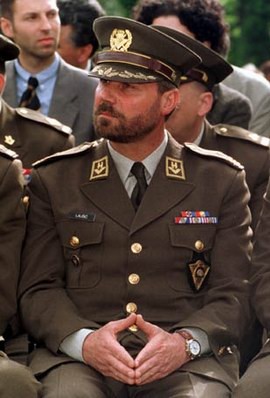
Mate Lausic knew everithing
1. Mate Laušić, born in Sisak on June 8, 1949. Lives in Zagreb, Lieutenant General of the Croatian Army, Commander of the Military Police of the Republic of Croatia (1992-2002), under whose responsibility the military camp "Lora" in Split was also responsible. Before the war, he was the leader of the security team of the President of Croatia, Franjo Tudjman.
2. Bosko Ivica, was the commander in the Lora camp from mid-May 1995 until 30 August 1996. and later in March and April 1997. He himself took part in the torture of the inmates.
3. Miroslav Buzov, commander of the camp in 1995. He himself participated in the commission of certain crimes.
4. Dujić A. Tomo, aka "Black", from Vukovar, born 30.8.1969. He was the longest serving manager of the Lora camp. He issued orders and directly participated in the commission of war crimes and the torture of detainees.
5. Granic Frane, from Imotski, issued orders and directly participated in the commission of crimes against prisoners in the camp. He replaced Tom Dujic as camp commander. Before the war he was a member of the Legion of Aliens.
6. Nikša Zainović, 35-40 years old. He ordered or directly participated in the commission of crimes against the inmates at the Lora camp.
TORTURES AND GUNS
1. Baban Ivica, a member of the Croatian Military Police.
2. Davor Banic aka "Bane", a former boxer from Slavonia, originally from Pakrac. He was a member of the intervention platoon.
3. Beck, a prison guard.
4. Robert Bjelokapić, aka "Black", from Herzegovina.
5. Boban, whose crimes the witness testifies about:
6. Tadija Bokanović, aka "Mrki", from Herzegovina, a member of the military police
7. Anđelko Botić, a guard at the camp, called "Little Anđelko", born 29.10.1967. in Labin from Father Blaz and Mother Stana.
8. Bosko, called "Fields",
9. Boro Bosniak, member of the intervention platoon from Borovo settlement. 180cm tall, 35 years old.
10. Josko Pribudić, guard, 25 years old.
11. Budalic, guard from Mostar area, tall, brown hair, strong.
12. Bungur Emilio, guard in the Lora camp, born 10.2.1960. in Šibenik, from father Milan and mother Dragica.
13. Vanja, last name not yet known,
14. Vidinic, whose last name is unknown,
15. Saša Vidović,
16. Viktor, whose last name is unknown, from Dugopolje.
17. Tonči Vrkić, from Split, born on May 6, 1960, to father Andija and mother Radojka. He was the deputy warden of the camp, Lora Tome Dujic.
18. Neno Gavrilovic, guard at Lora.
19. Mirko Galic, Commander of the 72nd Battalion of the Croatian Army in Dalmatia.
20. Dusko Gidic, a former JNA captain from Smederevo, born on 16 October 1955 in Pozarevac, by father Novica, joined the HVO.
21. Zvonko Giljanovic, aka "Giljo", from Metkovic, instructor in special units of the Croatian army.
22. Grbeša, name unknown born in 1974 or 1975.
23. Grujo Niksa,
24. Ante Gudić aka "The Artist", 190cm tall, blond hair, born 9.2.1971. in Donji Postinje, between Split and Drnis. Before the war he worked as a police officer in Split.
25. "Good", the nickname of a guard of an unknown first name, an elder with a mustache.
26. Doder Zoran, sergeant in the military police of the Croatian army. Born in Dugopolje, near Split. 30 years old.
27. Miljenko Drazic,
The 28th person, nicknamed "Dugi", is a guard of an unknown name, about 30 years old.
29. Emir, an unknown surname from Zvornik, by nationality, Muslim, 27 years old.
30. Jasko, of unknown name, guard at the camp. A native of Zenica, a Muslim nationwide.
31. Zdenko Jovic, military police officer.
32. Stipe Lekić, a guard at the camp,
33. Ivica Livaja,
34. Maleš Jerko,
35. Dzevad Mehic, aka "Brzi", a former JNA flag commander from Busovaca who joined the Croatian army.
36. Musa Tomislav, a former JNA soldier (worked as a military police officer in Sarajevo), a native of Kocerin near Siroki Brijeg (BiH). His grandfather was an Ustasha at NDH.
37. a person nicknamed "Nazi", whose first and last name is unknown.
38. Nikša Grujica, member of the Croatian Military Police.
39. Zeljko Obradovic, aka "Laca", a native of Bajrovac near Capljina (BiH), member of the VOC.
40. Luka Ošanić, a member of the Croatian Military Police from Metković,
41. A person with the nickname "Paraga", whose first and last name is unknown,
42. Tvrtko Pasalic, Deputy Zdravko Galic, Commander of the 72nd Battalion of the Croatian Military Police for Dalmatia.
43. A person with the nickname "Pepi", whose first and last name is unknown,
44. Perišić, aka "RAMBO" and Davor Perišić from Sinj,
45. A person with the nickname "Pobro", whose first and last name is unknown,
46. Edin Rakic, a former JNA soldier who crossed over to the Croatian side.
47. Almaz Resic, from Rudo, a former JNA soldier who crossed over to the Croatian side
48. Rogosic Tonci,
49. A person with the nickname "SAKE", whose first and last name is unknown, is 27 years old. Muslim from Brcko.
50. Sevic, whose first and last name is unknown,
51. Slavko, whose last name is unknown,
52. Zoran Sulejmanovic, aka "Sule", is about 25 years old. 185cm tall, brown hair.
53. Tanja Dujic r. Bjelobrajdic, she was the girlfriend, later the wife of Tome Dujic, the manager
Closing of the Camp
This Lora concentration camp in Split was closed in August 1997 due to pressure from international organizations on Croatia. That is 2 years after the Dayton Peace Agreement was signed, which is considered the end of the war in the area west of the river Drina.
TRIALS AND JUDGMENTS
At the end of September 2001, an investigation was opened against 8 members of the Croatian Military Police who were suspected of torturing and killing Serb prisoners in the 1992-1997 Lora camp. They were also remanded in custody while a wanted warrant for Tom Dujic, who was on the run, was issued. Immediately afterwards, witnesses were threatened.

Support for war criminal: Emilio Bungur
The trial of 8 suspected members of the Croatian military police began on 10 June 2002 in Split. The courtroom was crowded and under heavy security measures. This was the first trial of the "Lora case" and was called "Lora 1", where the deaths of civilians Gojko Bulovic and Nenad Knezevic were tried, as well as the torture of a number of Serb detainees.
On 19 June 2002, a large number of witnesses from Serbia and Montenegro did not go to trial because they fear for their personal safety.
On 20 June 2002 Prosecutor Mihael Skuikmaro sought the exemption of Split County Court Judge Slavko Lozine.
On 2 July 2002 Mario Barisic, a former military police officer, testifies and gravely charges 8 suspects.
On 22 July 2002, the Split County Court ruled that seven former military police officers be defended.
In August 2002 the pursuit of defendants who did not respond to a subpoena by the Split County Court had been organized.
In October 22, 2002 an inspection was conducted at the former Lora camp.
On 7 November 2002 Witness Mirolav Katalina came to trial. He was harassed in the corridor by friends and relatives of the accused.
On 22 November 2002 Split County Court Judge Slavko Lozika acquits all 8 defendants in the "Lora 1 case", arguing that there is insufficient evidence to create a first-class scandal.
In October 2004 the Supreme Court of Croatia annuls the decision of the Split Trial Chamber and restores the "Lora 1" procedure to the beginning.
On 12 September 2005 Judge Spomenka Tonkovic begins a new trial in the case of Lora. In the retrial, four accused were found instead of eight: Vrcic Tonci, Davor Banic, Ante Gudic and Anđelko Botic. The others were on the run: Tomo Dujic, Miljenko Bajic, Josip Bikic and Emilio Bungur. The retrial also included the majority of witnesses from Serbia, Bosnia and Herzegovina and Montenegro, who did not attend the first trial in 2002. That retrial was in very difficult conditions. There were frequent blackouts in the courtroom, lack of heating, sneering and vulgar comments from the audience.
On 2 March 2006, the Split County Court rendered a verdict for "Lora 1", according to which former military police officers were sentenced to 53 years in prison, of which Tomo Dujic received 8 years in prison, as much as his deputy Tonci Vrkic. Davor Banic, aka Bane, received 7 years in prison, followed by Miljenko Bajic, Josip Bikic, Emilio Bungur, Ante Gudic and Anđelko Botic each received six years in prison. According to the Criminal Code of Croatia, this offense is punishable by a sentence of 5 to 20 years in prison. These Split County Court verdicts have caused outrage in the courtroom, with derogatory words and curses.
On 6 February 2007, the Supreme Court of Croatia confirms the first instance verdict of the Split County Court for the "Lora Case".
On 18 November 2008, convict Josip Bikic, called Chop from the "Lora case", surrendered to police in Split.
On 23 December 2008, the Split County Court indicted five suspected HV military police officers for torturing large numbers of prisoners.
On 13 January 2009 In Split, the County Prosecutor's Office files new indictments for 5 former members of the 72nd Battalion, Croatian Military Police. Thus began the trial of the "Lora 2" case, which accused the abuse of more than 40 detainees in Lora and the murder of three prisoners of war: Bojan Vesovic, Dusan Jelic and Vlado Savic.
In September 2010, Miljenko Bajic was arrested at his family home.
In October 2011, Miljenko Bajic's trial was resumed in the "Lora Case." His sentence was reduced from 6 years to 4.5 years in prison by the Split County Court.
On 14 March 2012 Supreme Court of Croatia ordered trial of indictees charged with "Lora 2" after dismissing appeals of Tome Dujic and Eemilia Bungur, who were on the run.
On 9 September 2015, the trial of "Lora 2" began, with numerous former Croatian soldiers in front of the courthouse protesting and shouting derogatory names and slogans. The trial was postponed until further notice.
On 21 September 2016, the trial of the "Lora 2" trial resumed in Split, which was rife with numerous incidents and insulting court judges. The trial is due to continue in November 2016 with the hearing of 14 witnesses.
PUBLICATIONS
In 2007, Bridge Production and RTRS did a documentary called "The Martyrs", where part of the film is dedicated to the events at the Lora camp, that is, the testimony of the surviving inmates.
The Lora camp was a concentration camp in Split, where Serbs were tortured and killed during the wars in the former Yugoslavia. It existed from 1992-1997. The entire state and military leadership of the Republic of Croatia was informed about all the events in the Lora Camp. There were 1,005 registered prisoners who had undergone horrific psycho-physical torture through the camp.
This camp was established at the site of the former Yugoslav People's Army port of war. After the departure of the JNA from the Lora war port, members of the Croatian Military Police take over Lora. According to the testimony of the surviving detainees, Lora was considered one of the worst camps in the former Yugoslavia during the wars.
Tags:
Please, vote for this article:
Visited: 5111 point
Number of votes: 24
|